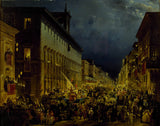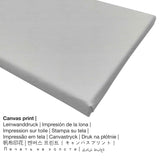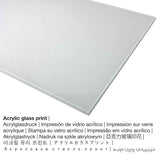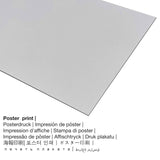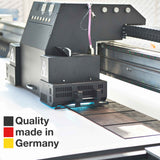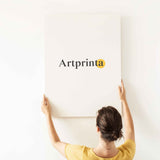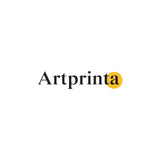Ippolito Caffi, 1834 - mgbede Moccoli na Rome - mbipụta nka mara mma
Ụtụ gụnyere. Mbupu gbakọrọ na ndenye ọpụpụ.
Nkọwa ngwaahịa
In 1834 Ippolito Caffi esere ihe nka "Moccoli Evening in Rome". Ihe izizi ihe karịrị afọ 180 nwere nha: 38,0 x 47,0 cm e jikwa nkà na-ese ihe mmanụ na kwaaji. Enwere ike ịhụ ya n'ime Ụlọ ihe ngosi nka nke Thorvaldsens Nchịkọta nka dijitalụ na Copenhagen, Denmark. Site n'ikike nke - Ippolito Caffi, Moccoli Evening in Rome, 1834, Thorvaldsens Museum, www.thorvaldsensmuseum.dk (licensed - public domain).Creditline of the artwork: . Further, the alignment is in odida obodo format ya na oke nke 4: 3, nke pụtara na ogologo bụ 33% ogologo karịa obosara. The painter Ippolito Caffi was a European artist, whose style was mainly Romanticism. The Romanticist painter was born in the year 1809 and passed away at the age of 57 n'afọ 1866.
Description from Thorvaldsens Museum (© Nwebiisinka - Thorvaldsens Museum - Ụlọ ihe ngosi nka Thorvaldsens)
Thorvaldsen’s collection includes no fewer than three city scenes by Caffi. Common to them all is the fact that they are all night paintings and are all about festivities. For tourists, moonlight walks in which imagination and reality, past and present were fused into one were among the highlights of visits to both Rome and Venice, and of course the experience was all the greater when there were fireworks and festivities in the streets. Caffi became a popular painter because he was able effectively and rapidly to capture the atmosphere and mood in landscapes and among the houses in the city. In this respect his virtuosity resides far from the typical Danish Golden Age painting. On the other hand, his skill at perspective was in no way inferior to that of Eckersberg. Like Eckersberg, Caffi published a textbook on perspective. The picture here provides a convincing impression of the long Corso Umberto I seen from the place where the Via Condotti enters it. Moccoloi is the Italian for a candle end, and the Moccoroli evening is the late night festival of light that concludes the Roman Carnival every year.
Iberibe ozi ndabere nka
| Aha nke ihe nka: | "Moccoli Evening in Rome" |
| Nhazi: | sere |
| Nhazi nka: | nkà nke oge a |
| Narị afọ nka: | 19th narị afọ |
| Afọ nka: | 1834 |
| Afọ nka: | 180 afọ |
| Ọkara nke ihe osise izizi: | mmanụ na kwaaji |
| Nha nke ihe nka izizi: | 38,0 x 47,0 cm |
| Ụlọ ihe ngosi nka / mkpokọta: | Ụlọ ihe ngosi nka Thorvaldsens |
| Ebe ebe ngosi nka: | Copenhagen, Denmark |
| E Nwere na: | Ụlọ ihe ngosi nka Thorvaldsens |
| License: | ngalaba ọha |
| Site n'aka: | Ippolito Caffi, Moccoli Evening in Rome, 1834, Thorvaldsens Museum, www.thorvaldsensmuseum.dk |
Tebụl ozi omenkà
| Aha onye nka: | Ippolito Caffi |
| Aha utu aha: | Ippolito Caffi, caffi cavaliere ippolito, Caffi Ippolito, Coffi Ippolito |
| Gender: | nwoke |
| Nationality: | Italian |
| Ọrụ: | onye na-ese ihe |
| Mba onye si: | Italy |
| Otu nka: | omenkà nke oge a |
| styles: | Ihunanya |
| Nwụrụ na afọ nke: | 57 afọ |
| Afọ ọmụmụ: | 1809 |
| Afọ nwụrụ: | 1866 |
Nye iwu ihe ngwaahịa ịchọrọ
Maka ngwaahịa ọ bụla anyị na-enye ihe dị iche iche dị iche iche na nha. Nhọrọ ndị a dị maka n'otu n'otu:
- Bipụta na iko acrylic (nke nwere ezigbo mkpuchi iko): The print on acrylic glass, which is often described as a an art print on plexiglass, will change the original work of art into marvellous home decoration. The acrylic glass protects your chosen art replica against sunlight and heat for up to 60 years.
- Aluminom dibond (ọkpụkpụ ọla): An Aluminium Dibond print is a print with a true effect of depth. The Direct Print on Aluminum Dibond is your excellent start to art prints produced with aluminum.
- Kwaaji: A canvas direct print is a printed canvas mounted on a wooden frame. A canvas of your favorite masterpiece will allow you to transform your art print into a large size collection piece. The great advantage of canvas prints is that they are relatively low in weight, which implies that it is easy to hang the Canvas print without the support of any wall-mounts. That is why, canvas prints are suited for all types of walls.
- Mbipụta akwụkwọ mmado (ihe kwaaji): The poster print is a UV printed cotton canvas with a granular finish on the surface, that reminds the actual version of the work of art. It is used for framing your fine art print with the help of a special frame. Please keep in mind, that depending on the absolute size of the canvas poster print we add a white margin 2-6cm round about the print motif, which facilitates the framing with your custom frame.
Ngwaahịa a
| Nkewa ngwaahịa: | mmepụta nka |
| Usoro mmeputakwa: | dijitalụ mmeputakwa |
| Usoro nhazi: | Mbipụta UV ozugbo (mbipụta dijitalụ) |
| Production: | German mmepụta |
| Ụdị ngwaahịa: | na mmepụta ihe |
| Ojiji ngwaahịa: | ụlọ mmepụta ihe nka, mgbidi gallery |
| Ndepụta: | nhazi odida obodo |
| Oke akụkụ onyonyo: | 4: 3 |
| Nkọwa: | ogologo bụ 33% ogologo karịa obosara |
| Nhọrọ ihe dị: | acrylic glass print (nwere ezigbo mkpuchi iko), mbipụta akwụkwọ mmado (akwụkwọ kwaaji), mbipụta kanvas, mbipụta ọla (aluminium dibond) |
| Kanvas n'elu etiti ihe ndọtị (mbipụta akwa akwa): | 40x30cm - 16x12", 80x60cm - 31x24", 120x90cm - 47x35", 160x120cm - 63x47" |
| Acrylic glass print (nwere ezigbo mkpuchi iko) nhọrọ: | 40x30cm - 16x12", 80x60cm - 31x24", 120x90cm - 47x35" |
| Mbipụta akwụkwọ mmado (akwụkwọ kwaaji): | 40x30cm - 16x12", 80x60cm - 31x24", 120x90cm - 47x35" |
| Nhọrọ nha nke mbipụta aluminom (aluminium dibond material) | 40x30cm - 16x12", 80x60cm - 31x24", 120x90cm - 47x35" |
| Nhazi mmeputa nka nka: | na-enweghị etiti |
Nkwupụta iwu: We try everythig possible to depict our products as exact as possible and to showcase them visually in our shop. Nevertheless, the tone of the printed materials, as well as the imprint may diverge slightly from the representation on the device's screen. Depending on your screen settings and the quality of the surface, color pigments can unfortunately not be printed 100% realistically. Since our are printed and processed by hand, there may also be minor discrepancies in the exact position and the size of the motif.
Nwebiisinka © | Artprinta.com (Artprinta)

